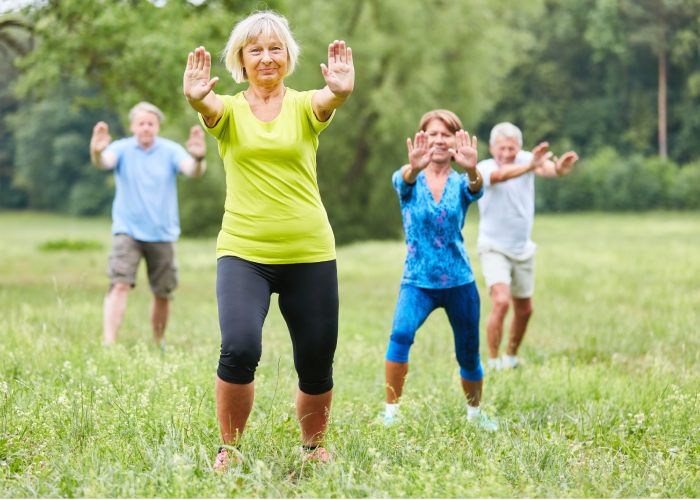It seems as if the concept of lung capacity has recently taken center stage because of the current pandemic we are experiencing. However, the ability to take in the proper amount of oxygen has always been an important concern.
Although many of us take breathing and oxygen intake for granted, we need to keep in mind that some individuals may suffer from decreased capacity over time.
Others (such as those suffering from conditions such as obstructive sleep apnea) should learn how can improve their capacity and overall pulmonary health. The good news is that there are many exercises and recommendations which are extremely beneficial and you will be pleasantly surprised with the final results.
Let’s take a look at a handful of expert recommendations as well as what they entail. After reading this article, you will indeed be able to breathe a bit easier!
Belly Breathing
Belly breathing is one of the most traditional ways to bolster your lung capacity over time. In fact, martial artists and those specializing in meditation have utilized this practice for hundreds of years. Belly breathing helps to relax the diaphragm and this will enable your lungs to expand to a greater extent.
To perform belly breathing, lie on your back and place on hand upon your stomach. Inhale through your nose for two seconds while making a point to feel your abdominal region expand. Then, exhale through semi-closed lips (pressing down upon your belly at the same time). The ultimate goal is to enable your abdomen to expand more than your lungs. Over time, this practice can help to increase your lung capacity.
Breathing with Pursed Lips
The main intention of this exercise is to slow down the frequency of your respiration. This will allow your airways to remain expanded for longer periods of time (obviously beneficial for those who have been diagnosed with sleep apnea). Not only will pursed breathing enhance the function of your lungs, but it can enable your body to exchange carbon dioxide and oxygen more efficiently.
Begin by breathing in slowly through your nose. Form your lips as if they were about to blow up a balloon. Try to breathe out as slowly as possible. Ideally, it should take twice as long to exhale. This can be repeated as many times as you desire.
Chi Gong
Chi Gong is a lesser-known practice which has been in existence since ancient times. Tracing its roots back to Chinese monks, this tradition involves activating various portions of the body through physical movements in order to stimulate their associated functions.
However, we are not necessarily referring to strenuous physical exercise in this situation. On the contrary, Chi Gong shares a number of motions in common with more famous arts such as Tai Chi.
Chi Gong is beneficial due to the fact that it can help to increase circulation to the lungs as well as to the extremities. Many approaches involve deep breathing exercises which are designed to open up the chest cavity as well as the diaphragm. If Chi Gong is practiced for extended periods of time, many of its practitioners claim that it will have a positive impact upon lung health.
Common Deep Breathing Techniques
This is arguably one of the simplest of exercises and yet, it can produce viable results if performed on a regular basis. All that you will require is a chair and a few spare moments of peace.
Sit upright in the chair and make a conscious effort to relax your shoulders. Then, arch your shoulders slightly back. This will help your rib cage to expand. Breath in deeply through your nose for a total of five seconds. Exhale through your nose as slow as possible until you feel that all of the air from within your lungs has been released.
Not only is deep breathing a great way to increase the capacity of your lungs with time, but it can also be used to counteract anxiety-related symptoms such as dizziness and shortness of breath. Try to get in to the habit of practising this type of breathing for between five and ten minutes each day.
Physical Activities
The body possesses an amazing ability to adapt to physical stress. This is why those who are only able to run for a few minutes at a time are capable of building up their stamina if they exercise on a regular basis.
Physical activities should always be incorporated if you are hoping to increase the efficiency of your lungs. These will naturally be based off of your current fitness levels as well as what you are realistically capable of performing.
A handful of great ways to positively impact your lung capacity include:
– Swimming
– Aerobic activities such as spinning classes
– Hiking or speed walking
– Jogging at a leisurely pace
– Adopting a regular weight training regime
– Enrolling in a fitness or martial arts school
We should still mention that it is important to take things slow in the beginning. This will help you avoid any muscle strains or injuries. Not only can physical activity positively impact the condition of your lungs, but it also may help to alleviate the symptoms of conditions such as sleep apnea.
Discovering the Exact Cause
It is first important to understand the reasons why you are suffering from decreased lung capacity. For instance, some individuals may have been recently diagnosed with COPD while others could unknowingly be struggling with obstructive sleep apnea. So, always be sure to speak with a specialist in order to get to the root of the problem.
All of the suggestions mentioned above will come in quite handy, and if they become a part of your daily routine, there is little doubt that you will feel much better within a short period of time. Lung capacity should never be taken for granted at any age.
